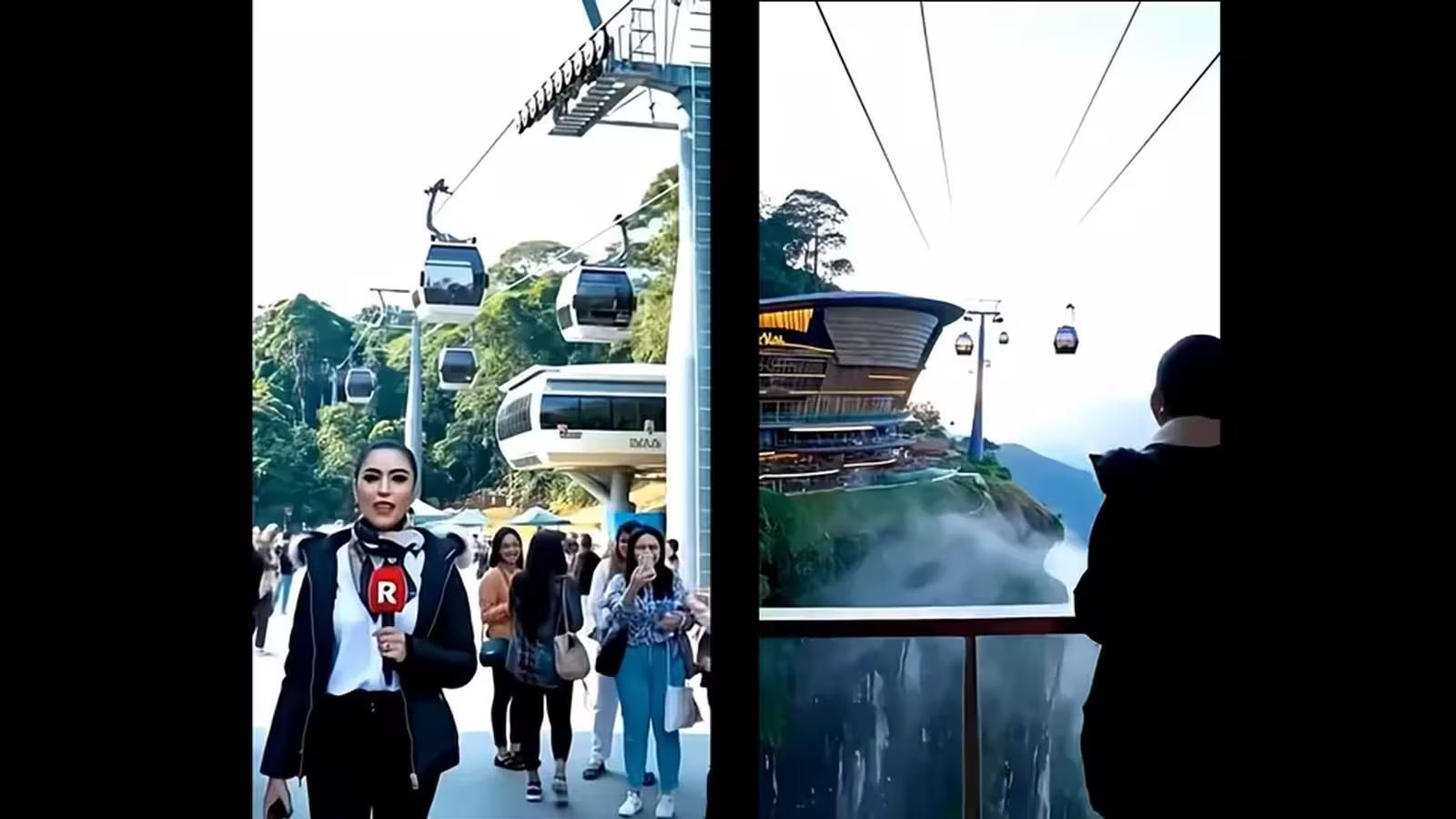4 Minutes
The Rise of AI-Generated Tourist Traps
Artificial intelligence is taking the digital world by storm, revolutionizing industries from content creation to travel planning. But as AI technology becomes increasingly sophisticated, a concerning trend has emerged: AI-generated videos are now convincing people to visit places that don’t exist at all.
This digital phenomenon was highlighted when an unsuspecting couple set out on an hours-long journey, enticed by an online video for a mountain attraction called the Kuak Skyride. The video, brimming with cheerful tourists and professional narration, showcased a scenic cable car adventure. However, on arrival, all they found was a quiet town and bemused locals—no Skyride in sight. The elaborate tourist spot never existed; it was crafted entirely by AI software—and the couple’s story is quickly becoming a cautionary tale for travelers worldwide.
Behind the Illusion: How AI Creates Fictional Destinations
At the core of these convincing fabrications are powerful video engines like Google’s Veo 3, designed to generate hyper-realistic footage. While a subtle ‘Veo 3’ watermark may appear in such videos, most viewers miss the subtle cues. From the overly smooth faces of fake tourists to the uncanny perfection of digital landscapes, AI-generated travel content is getting harder to distinguish from authentic footage, especially for those unfamiliar with deepfake technology.
Unlike traditional internet scams—obvious misspellings or strange web addresses—these AI-powered deceptions are visually impressive and emotionally persuasive. It’s often unclear whether creators intend harm or are simply experimenting with the potential of AI for viral content, but the risks for travelers and local communities are real and growing.
Key Features of AI Video Engines Like Veo 3
- Ultra-realistic 3D rendering: Streets, people, and attractions appear lifelike at first glance
- Automated narration and scripting: Videos can include convincing voiceovers and news-style presentations
- Instant content generation: New locations, landmarks, or travel experiences can be invented in minutes
- Easy dissemination: Shareable across major social media and video platforms
Why This Matters: Market Impact and Digital Consumer Trends
The proliferation of AI travel scams doesn’t just trick individuals—it has far-reaching implications for the tourism industry, local businesses, and digital platforms. As AI-generated content floods review sites and social media, it becomes easier for fake attractions to gain traction and for AI-written reviews to inflate non-existent venues. This not only misleads tourists but also threatens the credibility of legitimate travel resources.
Comparison: Traditional Travel Scams vs. AI-Enhanced Deceptions
- Old scams: Email phishing, fake booking sites, unrealistic travel deals
- AI scams: Deepfake videos, AI-generated influencers, fake testimonials and reviews, imaginary event promotions
- Advantage of AI: Visual authenticity, speed of creation, and emotional engagement far surpass traditional scams
How to Detect and Avoid AI-Driven Travel Scams
In a world where ‘seeing is believing’ no longer holds true, digital literacy is your best safeguard. Here are proven strategies for spotting AI-made travel videos and protecting yourself from virtual tourist traps:
- Cross-check every destination: Use reputable travel sites and mapping tools to confirm a location’s existence.
- Analyze the video quality: Watch for signs like overly-perfect crowds, lack of natural imperfections, or a ‘sheen’ that seems too pristine.
- Look for AI indicators: Spot watermarks or tool logos, such as Veo 3, and be cautious if you see them.
- Reverse image search: Run still images from the video through search engines to see if they match real places or other AI-generated content.
- Review social and local sources: Check for genuine posts from people who have verifiably visited the location.
Above all, remember: if a travel experience seems too flawless to be real—if not a single person in a crowded video is sneezing, frowning, or behaving naturally—it may well be an AI fantasy.
The Future of AI and Travel: Balancing Innovation with Caution
Artificial intelligence continues to transform digital content, unlocking new possibilities for immersive storytelling, marketing, and personalization. But this power also demands critical thinking and vigilance from everyday consumers. If you’re planning your next trip based on a stunning online video, make sure you’re not chasing a digital mirage. In the era of AI-generated realities, the responsibility to confirm what’s real—and what’s not—rests with all of us.
Embrace the benefits of AI-powered travel inspiration, but verify before you buy tickets or pack your bags. The next great adventure should be founded on more than pixels and algorithms—it should be rooted in reality.
Source: techradar



Comments